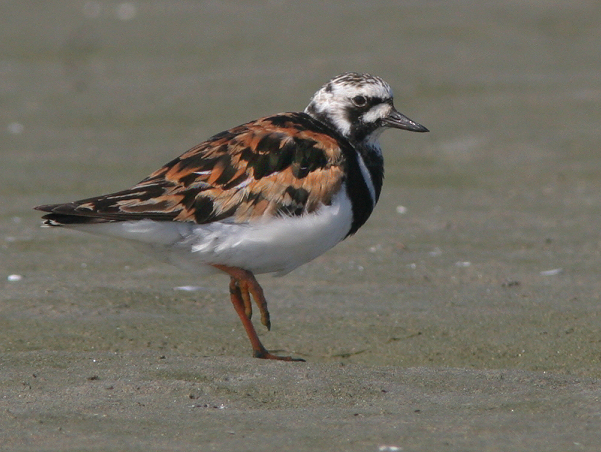
Date: 2006-08-05
Lens: Canon 300mm IS F4 + 1.4x II Converter

 Ruddy Turnstone
Arenaria interpres
Ruddy Turnstone
Arenaria interpres
 Description
DescriptionThis bird uses its wedge-shaped bill to open barnacles, dig holes, and flip aside stones, shells, and seaweed in pursuit of small invertebrates and insects. If fact, they are named for their ability to overturn stones and pebbles. While searching for crustaceans, these birds will often dig holes larger than themselves. Ruddy Turnstones are short, stocky sandpipers that may look slow, but they can fly at speeds up to 40 mph.
General: Sexes similar. 7 to 10 inches in length.
Breeding: Rusty orange and black back and wings. Black and white mottled head pattern. Black chest with white patch. White belly and underparts. Short yellow/orange legs. Bold black and white wing pattern in flight.
Non-Breeding: Gray-brown head and upperparts. White throat. Otherwise, similar to breeding plumage.
Juveniles: Similar to non-breeding plumage with pale edges on it's back and wing coverts.
Coastal beaches.
 Nesting
Nesting?? eggs with a 21-24 day incubation period. Fledging occurs 19-21 days after hatching. The nest is a small, deep hole on the rocky ground, with or without any lining.